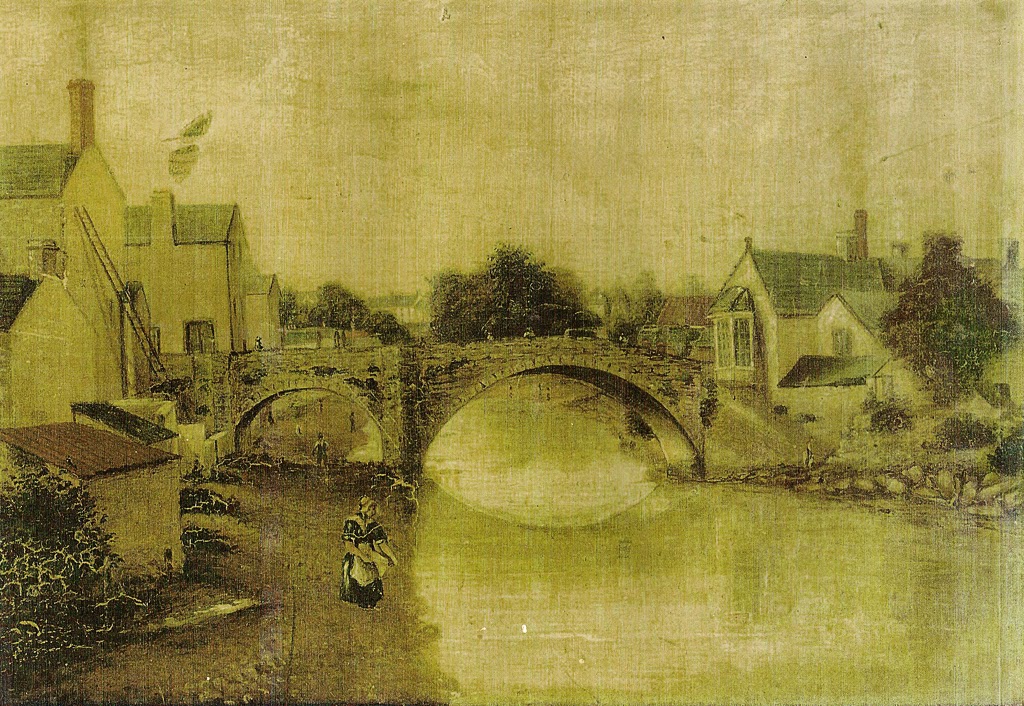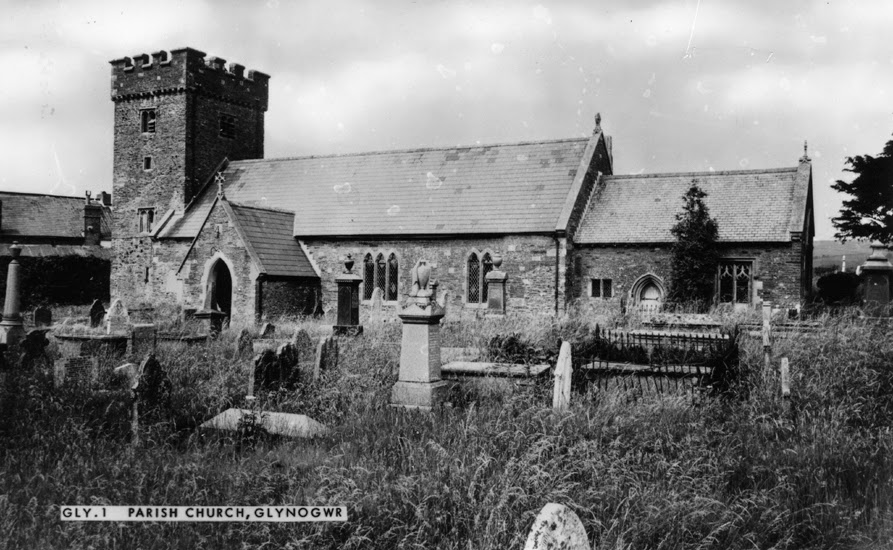I have recently acquired a copy of 'The Universal British Directory, 1791'. It gives an interesting account of what our town was like during the late 18th century. The directory focuses on the positive aspects of our town, as it would have been written so to be appealing to the traders of Britain. For each town there is a written description of the town which includes an introduction to some of its history and mainly its industry.
It then lists the gentry and traders of each town - but unfortunately it does not give the addresses of the traders.
Below transcribed parts of the directory which include the description and a complete list of all of the traders of the town during 1791.
![]() |
| A View of Bridgend - looking towards Newcastle, c.1830. |
Situated on the River Ogmore, in the centre of the county and is 10 miles from Cardiff – 8 miles from Cowbridge and 181 miles from London. It has a good market weekly on Saturday; and tow fairs annually – November 17th and holly Thursday which are well supplied with cattle of every description. The mail coach from London to Milford Haven and from thence to London passes by this town about one o'clock every morning but the post road turns off at Ewenny Bridge about a mile south of the town, at which place the letter bags are left and parcels delivered. It is pretty populous, tolerably well built and is daily improving. The in habitants have most of their shop good from Bristol and the conveyance for which is by the Newton boats once a fortnight; and for small parcels by the above coach daily or the Bristol newsman once a week.
The town is divided into three parts and is distinguished by the names of Oldcastle, Bridgend and Newcastle; and there are still remains of castles at the former and latter of those places; but the appellation of Bridgend serves for the whole as it is in that part that the markets are held and the greatest business transacted. The bridge over the River Ogmore divides Bridgend form Newcastle The soil round this place is extremely fertile and will cultivated; and as several English families have been induced to settle this neighbourhood the market is of late so much improved that the inhabitants are enlarging and making the marketplace quite commodious; and the provisions of every sort brought thereto are as good as any in England. Here is a neat town hall and the member for the county has been sometimes elected at this place.
The agriculture society of this county are beginning to establish a woollen manufactory at this town, and have had a spinning jenny, carding machine and the necessary apparatus for that purpose and it is hoped, that in a little time it will have the desired effect, as the water that runs through the town is allowed to be if as good a quality for the manufacture of woollen goods as any in the kingdom.
At Oldcastle is a chapel of ease under Coity that being the mother church; and at Newcastle is a tolerable well built parish church situated in such an eminence as to command a delightful land extensive prospect of the surrounding country.
The River Ogmore abounds with salmon, sewen, trout and variety of other fish, with which in the season the markets are well supplied. About half a mile North of the town is a quarry of excellent freestone the property of Richard Price Esq which is equal to any stone in England, and is now used. The inns in this town are the Wyndham Arms and the Globe.
Dunraven Castle is the seat of Thomas Wyndham, Esq member for the county of Glamorgan – At the pleasant village of Southerndown which is close to Dunraven is an exceeding good sea bathing place.
The following include a list of principal inhabitants and a list of the traders of the town.
Gentry
Mrs. James – Widow
Mrs. Matthews – Widow
Richard Picton – Turberville esq
Mrs. Popkin – Widow
Miss Anne Rees
Mrs. Thomas – Widow
Clergy
Rev. James Jones – Curate of Newcastle
Rev. Samuel Price – Dissenting Minister
Physic
Edmund Saunders – Surgeon
Thomas Smith – Surgeon
Jenkin Williams – Surgeon
Law
Charles Llewellin – Attorney
William Pritchard – Attorney
Traders
John Austin – Farmer
William Bevan – Currier
Thomas Bowen – Watch Maker
Ruth Carrick – Victualler (Red Lion)
Walter Coffin – Tanner
John Cook – Currier
John Dagg – Clothier
William David – Sheriffs – Officer
William David – Victualler (White Lion)
Philip David – Victualler (Six Bells)
William David – Farmer and Victualler
Elizabeth Davies – Shopkeeper
Samuel Davies – Maltser
Richard Edge – Shopkeeper
Catherine Evans – Victualler (Ship)
William Flew – Farmer
Catherine Flew – Toll Gate Keeper
Thomas Francis – Shoe maker
William George – Shop Keeper and Victualler
Thomas Harry – Taylor
William Hopkin – Farmer
David Howell – Smith
Thomas James – Farmer
David Jenkin – Victualler (Lamb)
Jenkin Jenkin – Mason
Richard John – Farmer
Edward Jones – Saddler
Morris Jones – Toll Gate Keeper
David Jones – Farmer
Evan John – Mason
John Lewis – Wyndham Arms Inn
James Lamley – Peruke Maker
John Lewis – Cooper
Howell Llewellin – Ironmonger
David Llewellin – Butcher
Henry Lloyd – Supervisor of Excise
David Morgan – Victualler (Angel)
William Morgan – Farmer and Shopkeeper
Jenkin Nicholas – Shoemaker
Thomas Redwood – Tanner
William Rees – Ironmonger
Anne Rich – Victualler (Globe Inn)
William Richards – Glover and Breeches maker
William Robert – Sheriffs – Bailiff
David Robert – Carpenter
Catherine Smith – Shop Keeper
John Tanner – School Master
David Thomas -Chandler and Victualler
David Thomas – Shoe Maker
Nicholas Thomas – Blacksmith
Edward Thomas – Joiner and Carpenter
Edward Thomas – Farmer
George Webber – Gardener
Robert Wild – Victualler (Greyhound)
Robert William – Maltser
Robert William – Glazier
David Williams – Victualler
Thomas Williams – Weaver
Richard Williams – School Master
(Sources: 'The Universal British Directory, 1791.)












.jpg)









.jpg)












.jpg)



